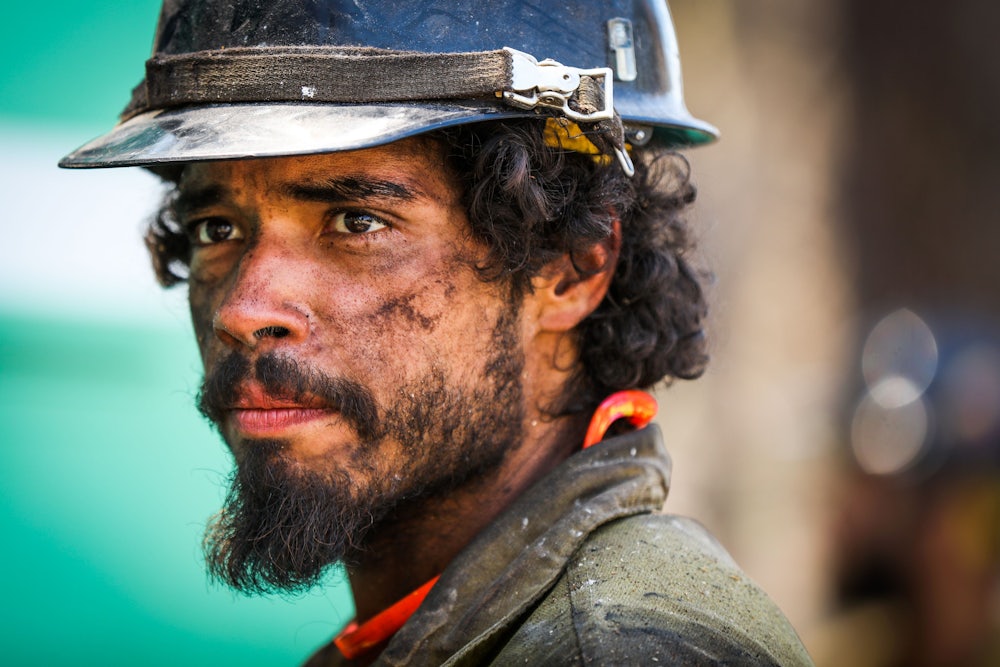At a Democratic primary debate in January, a 23-year-old voter named Connor Franta posed a question to the candidates via YouTube. “Getting my generation’s vote should be a priority for any presidential candidate,” he said. “How are all of you planning on engaging us further in this election?”
Hillary Clinton went in for what should have been an easy layup. “Look,” she began, “this election is mostly about the future. And therefore it is of greatest urgency for young people.” But then, instead of talking about all “young people”—the 75 million Americans aged 18 to 35—she narrowed her focus. “I’ve laid out my ideas about what we can do to make college affordable,” she said, “how we can help people pay off their student debts and save thousands of dollars.”
Her answer, while accurate, was unintentionally revealing. When Clinton talks about millennials, she tends to use the word interchangeably with “college students.” But millennials with university degrees don’t represent their entire generation—just those with the greatest economic and educational advantages. A full 40 percent of young people never made it past high school, according to a recent analysis by CIRCLE, a research center that specializes in youth issues. Even when it comes to young voters, it would seem, Clinton instinctively speaks to the elites.
Politicians tend to ignore working-class millennials for a simple reason: They don’t show up on Election Day. Just 29 percent of blue-collar youth turned out to vote in 2012—about half the rate of those who’d attended college. But in market terms, that political disengagement represents an opportunity for Clinton: CIRCLE estimates there are more than 17 million eligible voters under 35 still waiting to be mobilized—the last big segment of American voters that is genuinely up for grabs.
At the moment, however, Clinton’s biggest weakness is her standing among less-educated voters. According to a recent poll, Donald Trump enjoys a 40-point lead among white voters of all ages without a four-year college degree. Clinton’s best chance to cut into Trump’s huge advantage is to court the younger, less-conservative slice of that working-class vote. But during the primaries, she struggled to attract young voters of all stripes, yielding 70 percent of the youth vote to Bernie Sanders.
Clinton is acutely aware of her deficit among millennials. In June, the campaign hired a former Sanders staffer who specializes in college outreach, and said it planned to bring in more. Plans were hatched to make Sanders her “campus ambassador” in the general election. But such moves won’t win over the other millennials—a challenge that no campaign, not even Barack Obama’s, has ever solved.
James Mackey, a 30-year-old community organizer in Boston, knows firsthand how tough it can be to mobilize his peers. “If you’re trying to make ends meet every day,” he says, “working nine to five with a job that’s only paying you $8 an hour, and your rent is $1,200, and electricity and utilities are adding up, and your kids are in school, you’re not thinking about, ‘Who am I gonna vote for?’ ”
Then there’s the problem of access. It’s easy to reach thousands of college students with a single rally on campus. But the rest of the millennial generation doesn’t live and congregate in one convenient location. In 2008, youth organizers for Obama camped out at farmers’ markets and music venues, and worked through churches and labor unions to find millennials who weren’t in college. Registering voters was the main goal. But the campaign also focused on portraying Obama not just as a candidate, but as a cultural icon.
“The stickers, the graffiti, the street art, the music—it just went on and on,” recalls Hans Riemer, who served as Obama’s national youth vote director. “And it became a cultural phenomenon that really was not about ‘college’ or ‘not college.’ It didn’t really matter.”
Maybe not. But while Obama wound up winning 66 percent of non-college millennials’ votes, they did not turn out in droves—and four years later, their turnout numbers plummeted back below 30 percent.
By rights, working-class youth should be Clinton’s for the taking: Fifty-two percent lean Democratic; 34 percent tilt Republican. And because so many are politically disengaged, their leanings are considered “soft,” in campaign parlance: They could be swayed by any candidate with a message that resonates.
So far, though, Clinton has failed to put together that message. To pry young, working-class voters away from Trump, she’ll need to champion a host of unglamorous, brass-tacks economic issues. Take one example that antiregulatory conservatives have embraced: streamlining the process of securing licenses for professions like hairdresser, electrician, or building contractor. “It shouldn’t take me longer to become a florist than to become an EMT,” says Patrice Lee of Generation Opportunity, the conservative youth outreach network underwritten by the Koch brothers. “It locks a lot of young people out of opportunity.”
There is one part of Obama’s playbook, however, that Clinton should not try to emulate. It’s inherently harder to make Clinton cool, thanks to her stodgy political persona and her 25 years in the spotlight. But her distinctly uncool nature could actually help her connect with non-college millennials more effectively than Obama did. They’re not looking for a pop-culture icon; they want someone who hears their concerns and gets the job done for them.
And that, more than anything, is Clinton’s selling point: She’s not exciting, but she’s effective. She will never be the preacher who sets college campuses afire. She will never look at home on a hope poster. But if she can conquer her own elitist tendencies when she’s courting “young people,” and pitch concrete solutions and straight talk to millennials who didn’t go to college, then her get-it-done approach—coupled with her profound lack of coolness—just might turn out to be her secret weapon in November.
